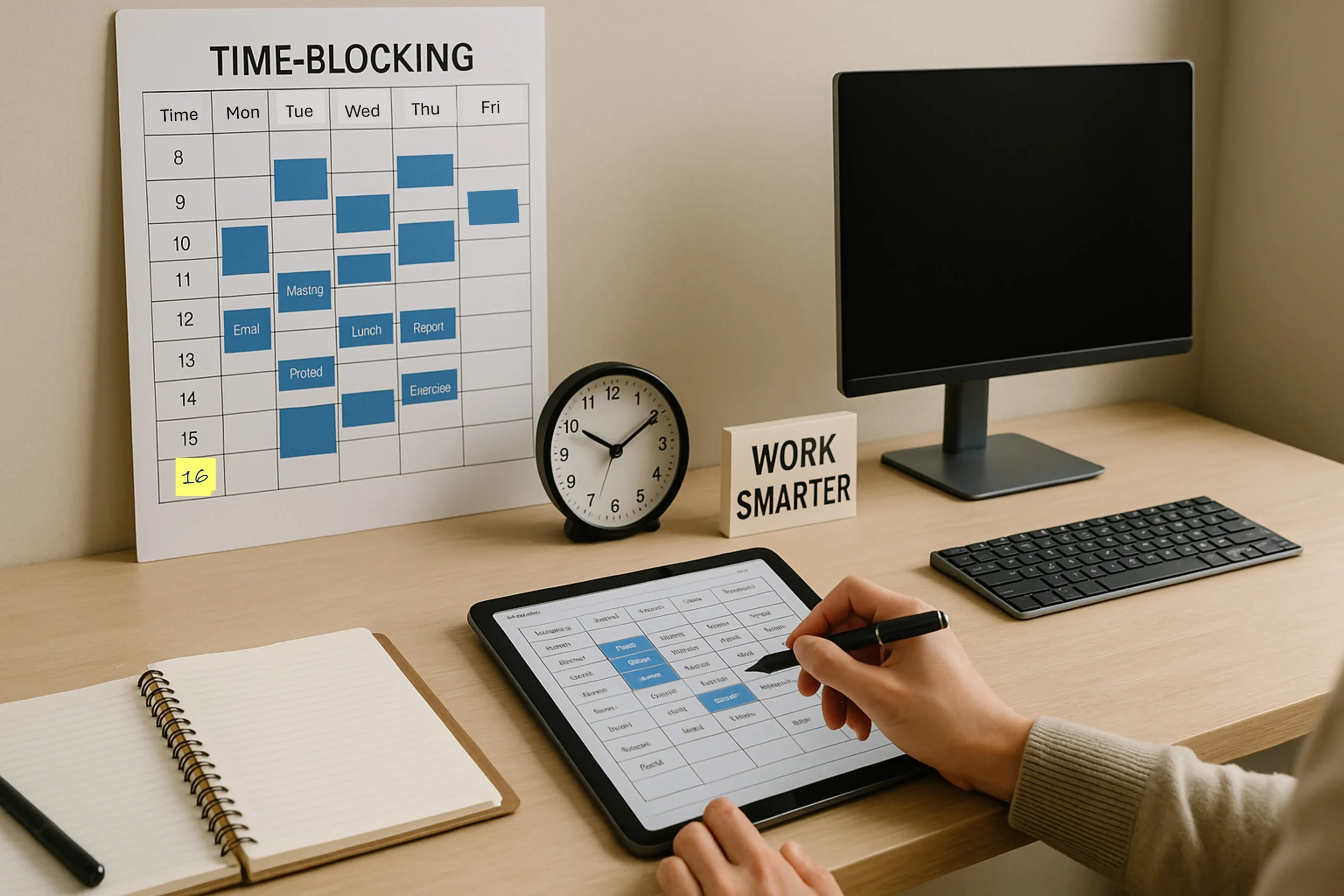Achieving high productivity at work is less about working harder and more about working smarter. One of the most effective ways to do that is by organizing your routine in a way that maximizes your energy, focuses your efforts, and eliminates unnecessary distractions. In this article, you’ll learn practical strategies to structure your day and take control of your time to produce better results with less stress.
The Importance of Routine for Professional Success
A well-organized routine helps you maintain consistency, reduce decision fatigue, and develop positive habits that lead to long-term success. When your day is structured, you spend less time deciding what to do next and more time actually doing it. This leads to better time management, fewer distractions, and increased productivity.
Start with a Morning Routine That Energizes You
The way you start your day can set the tone for everything that follows. A productive morning routine should awaken your mind, energize your body, and prepare you mentally for the day’s challenges.
Some effective morning habits include:
- Waking up at the same time every day
- Stretching or exercising for 15–30 minutes
- Eating a nutritious breakfast
- Reviewing your goals or intentions for the day
- Avoiding email or social media during the first hour
Plan Your Day the Night Before
One of the best ways to stay organized is to plan tomorrow’s tasks before you go to bed. Spend 5–10 minutes each evening reviewing what you accomplished and what needs to be done next. Write down the top 3 priorities for the next day. This not only helps you sleep better, but also lets you hit the ground running in the morning.
Break Your Day Into Blocks
Time blocking is a method where you divide your day into chunks of time dedicated to specific tasks or types of work. Instead of multitasking, you focus on one task during each block. This reduces cognitive overload and increases efficiency.
Here’s a simple time block layout:
- Morning Block (9 AM – 12 PM): Deep work (most important tasks)
- Midday Block (1 PM – 3 PM): Meetings and collaborative tasks
- Afternoon Block (3 PM – 5 PM): Emails, admin work, planning
- Evening Block: Reflection, light reading, or personal development
Set SMART Goals for the Week
To stay productive and organized, it’s helpful to set weekly goals that are:
- Specific
- Measurable
- Achievable
- Relevant
- Time-bound
Break down big projects into smaller tasks that can be accomplished within a few hours or a single day. Assign each task a deadline and place it into your calendar.
Eliminate Distractions and Focus on One Task at a Time
Productivity drops significantly when you’re interrupted or try to multitask. Set clear boundaries during your work time:
- Turn off unnecessary notifications
- Use noise-canceling headphones if needed
- Let others know your “do not disturb” hours
- Use productivity tools like Focus Mode or Pomodoro timers
Focusing deeply for 25–50 minutes, followed by a 5–10 minute break, can significantly improve concentration.
Build In Time for Breaks and Rest
Working nonstop is a recipe for burnout. Schedule regular breaks to allow your brain to recharge. Take a short walk, stretch, or drink water to stay refreshed.
Include a proper lunch break away from screens. Taking breaks can help you return to your tasks with renewed focus and energy.
Reflect and Adjust Weekly
Every week, take a few moments to evaluate your routine. Ask yourself:
- What worked well this week?
- What caused distractions or stress?
- What tasks can be automated, delegated, or eliminated?
- How can I make next week more effective?
Routine is not meant to be rigid—it’s a tool. Keep adjusting it based on your work style, energy levels, and priorities.
Use Technology to Stay on Track
Leverage apps and digital tools to keep your routine organized. Here are a few suggestions:
- Trello or Asana for task management
- Google Calendar for time blocking
- Notion or Evernote for note-taking
- RescueTime or Toggl for time tracking
Technology, when used wisely, can support your productivity instead of distracting you.
Balance Structure with Flexibility
While routines bring order, it’s essential to leave room for flexibility. Unexpected things happen—deadlines shift, meetings get rescheduled. The goal is to have a framework that supports you, not one that stresses you out.
Don’t beat yourself up if you deviate from your schedule now and then. Use these moments as opportunities to learn and improve.
Organized Routines Lead to Organized Results
A chaotic day often results in chaotic work. By taking control of your routine, you can stay focused, get more done, and reduce workplace stress. Over time, your consistent efforts to structure your day will translate into greater professional success and personal satisfaction.
